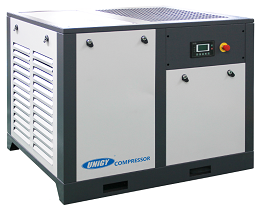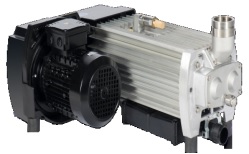Food industry
-
The food industry refers to the industrial production department that uses agricultural and sideline products as raw materials to manufacture food through physical processing or yeast fermentation. The main raw materials are primary products produced by the agricultural, forestry, animal husbandry, fishing, and sideline sectors. According to the classification catalog formulated in December 1984 in China, it is collectively referred to as the food, beverage, and tobacco manufacturing industry. It is divided into four major industries: (1) food manufacturing industry, including grain processing industry, vegetable oil processing industry, pastry and candy manufacturing industry, sugar manufacturing industry, slaughtering, and meat processing.
Application of Air Compressors in the Food Industry
Sugar refineries and roasting plants use compressed air to transport syrup. The mixing of certain liquids and liquid immersed foods, such as pickles, is achieved by using a Unijie twin screw air compressor to inflate. The pressure filter also uses the same power. Canning factories use compressed air for canning machines, as well as for heat refining and disinfection.

- The high nitrogen content environment in the storage area delays the spoilage of many foods, such as apples, which can be stored for several months longer. This is mainly due to a decrease in oxygen content, while the addition of small amounts of carbon dioxide and other gases inhibits enzyme reactions and delays the growth of molds and fungi.
Many food packaging uses inert gases to isolate them from oxygen, which is the main cause of most spoilage. The commonly used gases are nitrogen and carbon dioxide, and nitrogen is used in most cases due to its high inertness. Carbon dioxide is soluble in water, so in some cases it is slightly acidic. Nitrogen is more commonly used in foods with aromatics. Carbon dioxide can maintain the color of salted meat. Gas packaging is more popular when vacuum packaging can cause food slices to break or become sticky and difficult to separate. Gas packaging is also particularly suitable for crispy freeze-dried foods.
In a baking plant, air is used to remove biscuit residue, butter is sprayed onto a pan, and the amount of dough measured by an automatic rolling mill is pressed tightly. A jet machine is a good method for cleaning bread crumbs in a bread slicer without stopping the machine. One of the newly discovered and rapidly developing important applications of compressed air in baking plants is the handling of flour through pneumatic conveyors. This conveyor completes flour handling fully automatically from the unloading truck. The complete flour handling process is carried out economically and hygienic in a closed pipeline system without any manual handling.
Application examples of Leybold vacuum technology in packaging processes:
Vacuum technology is the key to food packaging and processing applications. In the past, users often chose oil pumps to meet their usage needs, but oil pumps can easily bring pollution risks. Returning or gushing oil not only pollutes your work area, but is more likely to contaminate food. 
-
Bag Packaging Machine/Rotary Evacuation
Vacuum packaging - Fresh food packaging to maintain food freshness
MAP Packaging - Modified Atmosphere Packaging for Food
Forming - direct tray forming inside the packaging machine
Blister packaging - blister hot forming
Foil conveying - used in tubular bag packaging machines
Labeling - Quickly and firmly label various packages
Carton Assembly - Carton Folding and Packaging Forming
Stacking and pushing packaging - all outer packaging
Central Vacuum System - Centralized supply of vacuum for the entire packaging department
Oil sealed rotary vane pumps can cause oil pollution, while dry rotary vane pumps can cause dust pollution Dry screw pumps are more in line with hygiene standards, and the overflow part of the pump chamber is free of oil and does not produce dust

